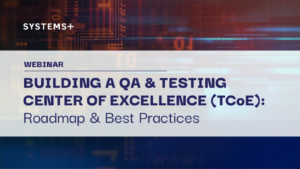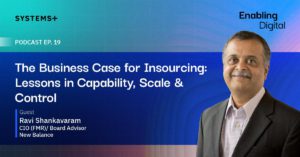2020 may just be the year that lets humans be ‘more humans and less robotic’ – courtesy Robotic Automation Process (RPA). RPA has been using software bots that emulate human activities by performing repetitive business processes for a while now – in short, it has efficiently been mimicking its human counterpart!
The fact that RPA has enabled greater speed and accuracy when it comes to the execution of these robotic tasks, and at a fraction of the cost, has also made it the fastest-growing segment of the global enterprise software market, according to Gartner, Inc. There is a perception that introducing RPA will result in loss of jobs but quite honestly, I feel that this is an opportunity to upskill human talent to engage in more challenging and complex tasks. Would this not then make work in general more meaningful for both the employee & the organization?
While tackling tactical processes is the first step, one does wonder how RPA would apply to the slightly more abstract and complex forms of task. The kind that requires judgement, weighing conflicting demands or even deciding the course of action? This is what I refer to as the next level of RPA. To put it simply, it is the amalgamation of RPA, machine learning (ML) and artificial intelligence (AI). When combined, these powerful tools take digital transformation to a whole new level by intelligently deploying RPA. Visualise an intelligent automated bot manager monitoring and synchronizing robot deployment and backlogs with scheduled workflow. This is how cognitive automation will be the game changer for RPA.
In one of my earlier statements, I referred to RPA as an ‘efficient’ mimic for it imitates the ‘manual’ path a human worker would take to complete the task. However to do that, it would need to understand what is communicated to it by the worker. In this case, let’s draw a parallel between a young child and the computer. Just as the child learns by imitating simple sounds, words and sentences, the computer too follows a similar path of learning. And this is where technologies such as Natural Language Processing (NLP) and Optical Character Recognition (OCR) come into play. They help enhance the capabilities of RPA many fold. What I am getting at is, RPA is the ‘doer’ while AI is the thinker.
The integration of NLP with RPA provides the latter with the depth and understanding of human-to-human communication, allowing it to communicate just as effectively. . Meanwhile, OCR digitizes static information such as an invoice number etc. on documents to automate the process end-to-end. The result? It gives people more time… allowing them to focus on higher value work.
So far, I have spoken of all the good that RPA can do. But there is still another very important aspect that we need to ponder on – cybersecurity. Many organisations across various sectors are looking at automating their security posture. The biggest advantage you ask? It minimises the risk exposure for incoming attacks by improving response time, providing reliable detection and solution when issues are discovered and removing human error.
However, since RPA handles a wide array of company data it has also opened up new threats. . Data can be disclosed, stolen, destroyed or modified, access can be gained to unauthorized applications and systems, to exploit existing vulnerabilities. This is why for companies dealing with a significant degree of automation — or any degree of automation, for that matter — one of the biggest concerns is security. Addressing cyber risk by securing the robotics platform and leveraging the bots to enable threat prevention, early detection and mitigation, is extremely important.
Lastly, the democratization of RPA, is another important aspect that organizations need to look at. The simplification of automation will help democratize RPA and expand its use. Currently, for the most part automation through RPA is accomplished through programming and is a major cost of RPA implementation. This includes skilled resources like RPA developers who know the newest no code RPA solutions, so that organizations can circumvent challenges associated with the long programming period.
To conclude, RPA today is one of the leading tools that is propelling digital transformation. However, it is only a catalyst. It needs to be orchestrated in the context of the broader vision, alongside other tools that deliver what RPA alone cannot: visibility, intelligent optimization and a direct impact on overarching business outcomes. Its not just about pick & fix, its about building the larger story that will determine successful outcomes for the future – this is right up our alley if its something you are interested in as well, Lets Talk!






